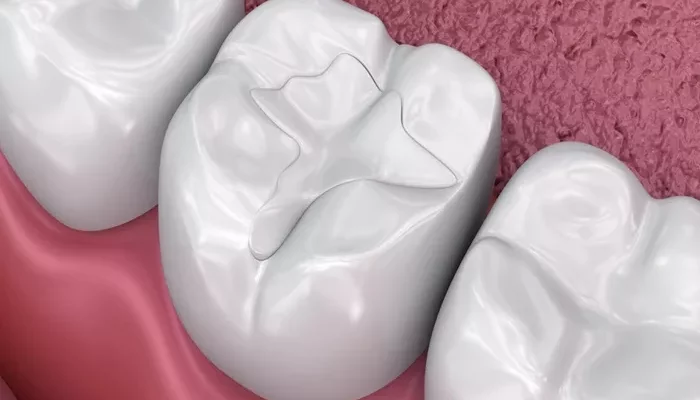Dental fillings are a common dental procedure used to restore teeth that have been damaged by decay, fractures, or wear.
Unlike some other healthcare products, dental fillings cannot be purchased over the counter. This is due to the complexity and specificity required in the application of dental fillings, as well as the potential risks associated with improper use.
What Are Dental Fillings?
Dental fillings are materials used to restore the function and structure of teeth that have been damaged. They are typically made from a variety of materials, including amalgam (a mixture of metals), composite resins (plastic-like materials that can be matched to the color of the tooth), glass ionomers (cement-like materials that release fluoride), and porcelain or ceramic (used primarily for inlays and onlays).
The process of placing a dental filling involves removing the decayed or damaged portion of the tooth, cleaning the affected area, and then filling the cavity with the appropriate material. The filling is then shaped and polished to match the surrounding tooth structure, restoring the tooth’s appearance and function.
Why Are Dental Fillings Not Available Over The Counter?
Professional Assessment and Diagnosis
One of the primary reasons dental fillings are not available over the counter is the need for a professional assessment and diagnosis. A dentist must examine the tooth to determine the extent of damage, the type of filling material needed, and whether any additional treatment is required. This assessment requires specialized training and experience, as well as access to diagnostic tools such as X-rays and intraoral cameras.
Without a professional diagnosis, patients may misjudge the severity of their tooth decay or damage, leading to improper treatment or even worsening of the condition.
Precision and Technique
Placing a dental filling requires precision and technique. The dentist must carefully remove the decayed tissue while preserving as much healthy tooth structure as possible. This requires the use of specialized dental instruments and handpieces, as well as a steady hand and good eye for detail.
Once the decayed tissue is removed, the dentist must clean the cavity thoroughly to remove any remaining bacteria or debris. The filling material is then carefully placed and shaped to fit the cavity perfectly. This process requires a high level of skill and attention to detail to ensure that the filling is both functional and aesthetically pleasing.
Risks of Improper Use
Another reason dental fillings are not available over the counter is the potential risks associated with improper use.
Without proper training and guidance, patients may attempt to place fillings themselves, leading to a variety of problems.
These can include:
Inadequate Removal of Decay: If decayed tissue is not removed completely, the infection can continue to spread, leading to further tooth damage and potentially requiring more extensive treatment.
Improper Filling Placement: If the filling is not placed correctly, it can fall out or cause discomfort. It may also lead to tooth fracture or other complications.
Sensitivity and Infection: Improper filling placement can also expose the tooth’s pulp (the soft tissue inside the tooth that contains nerves and blood vessels) to bacteria, leading to sensitivity, infection, or even tooth loss.
Material Selection and Customization
Dental fillings are not one-size-fits-all solutions. The type of filling material used depends on several factors, including the location and size of the cavity, the patient’s bite, and their aesthetic preferences.
For example, amalgam fillings are durable and suitable for larger cavities in areas of the mouth that are not visible when smiling. Composite resins, on the other hand, can be matched to the color of the tooth and are often used in more visible areas, such as the front teeth.
A dentist must assess these factors and select the most appropriate filling material for each individual patient. This requires a level of expertise and customization that cannot be achieved with over-the-counter products.
Alternatives to Over-the-Counter Dental Fillings
While over-the-counter dental fillings may not exist, there are several alternatives that patients can consider for treating tooth decay or damage.
Professional Dental Treatment
The most effective alternative to over-the-counter dental fillings is to seek professional dental treatment. This involves visiting a dentist for a comprehensive examination and diagnosis, followed by the placement of a custom-made dental filling.
Dental treatments are not only effective but also safe, as they are performed by trained professionals who have access to the latest diagnostic tools and treatment techniques.
Home Remedies and Preventive Measures
While home remedies cannot replace professional dental treatment, they can be used to alleviate discomfort and prevent further tooth damage. For example, rinsing with saltwater can help reduce inflammation and pain caused by tooth decay or gum disease.
Preventive measures, such as regular brushing and flossing, using fluoride toothpaste, and avoiding sugary snacks and drinks, can also help prevent tooth decay and reduce the need for dental fillings.
Dental Sealants and Fluoride Treatments
Dental sealants are plastic coatings that are painted onto the chewing surfaces of teeth to prevent decay. They are particularly effective in protecting the pits and fissures of molars, which are difficult to clean with a toothbrush.
Fluoride treatments, which can be applied topically in the form of gels, varnishes, or rinses, can also help strengthen tooth enamel and prevent decay. These treatments are typically performed by a dentist or dental hygienist.
Conclusion
In conclusion, dental fillings are an essential part of dental care, but they cannot be purchased over the counter. This is due to the complexity and specificity required in their application, as well as the potential risks associated with improper use.While over-the-counter alternatives may be tempting, they cannot replace the expertise and customization that comes with professional dental treatment. By seeking professional dental care, patients can ensure that their teeth are treated effectively and safely, with minimal risk of complications.
Related topics:

